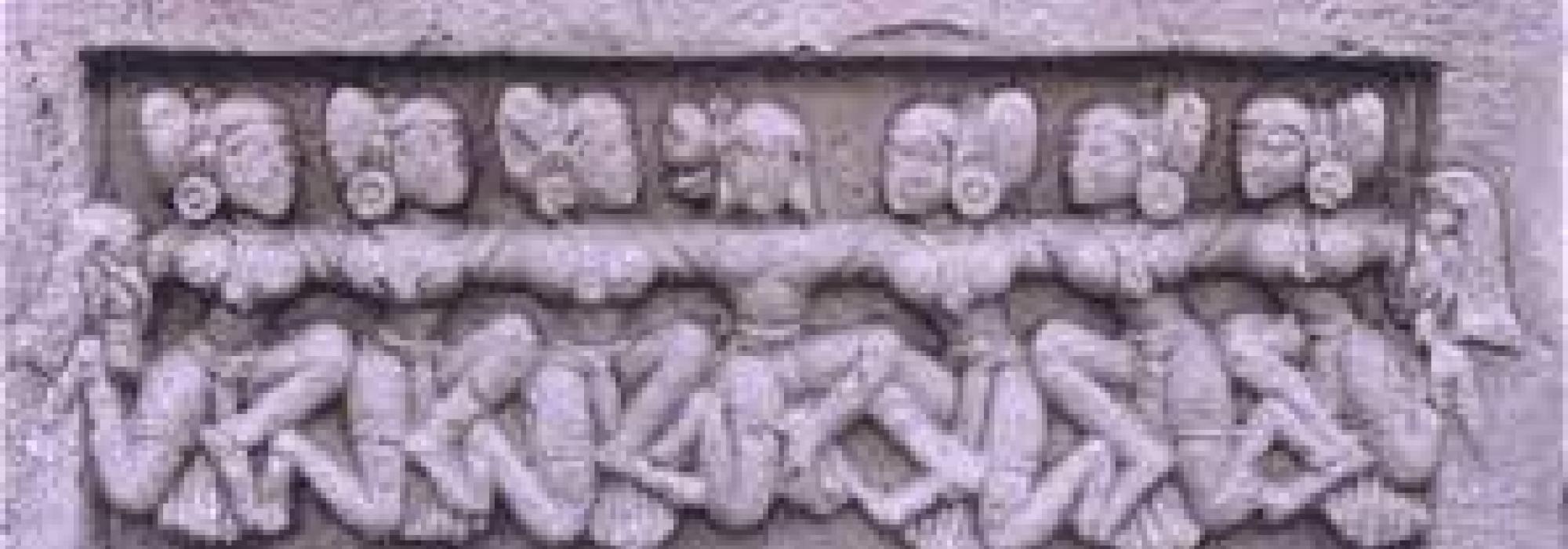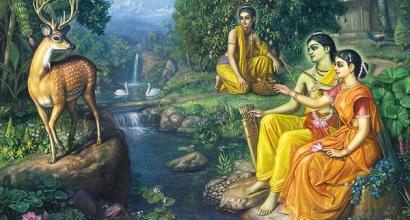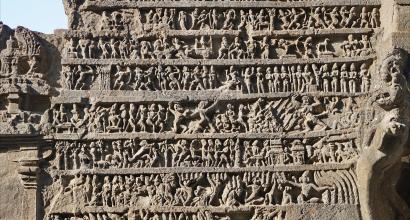We will need to search for an object at the place where we have lost it – this is inevitable and also expected. We can examine this from the perspective of music. It is needless to say that music is inevitable for dance and in a sense directs dance. In a dance recital, even if the dancer is below par, we can relish the performance to some extent if the music accompaniment is good. On the contrary, if the dance is good but the accompanying music is below par, we will be unable to stand the show. It would not be an exaggeration to say that the potential of music to trigger different emotions is unparalleled. No other art can compete with music on this note. North Indian classical music—popularly called Hindustani—stands out among the systems of music in India. It is quite unfortunate that today, in a concert of South Indian classical music—popularly called Carnatic—we see the rendition of multiple compositions to the extent that the sthāyi-bhāva is lost in between. In the Hindustani system, on the other hand, a particular rāga is elaborated for an hour or more. Only about two to three rāgas are chosen for presentation in every concert. The sthāyi-bhāva of every rāga thus presented seeps down into the heart of the connoisseur. This gives an experience that no other art does. Though only a few artistes can be successful in this medium, the peaks and depths of the art that they can lay bare can satisfy its connoisseurs for long periods of time. Only intense connoisseurs and artistes can derive unalloyed enjoyment out of a Hindustani concert. An art which can better itself from time to time can be called as the best form of art. Others are of a much lower kind.
Nṛtya-nāṭaka (dance-drama) and samūha-nṛtya (group dance) that have entered the dance arena in modern times have been revolutionary. Unfortunately, these two new genres that have emerged in the last four decades of the twentieth century have not adopted any aspect of the aesthetics of the existing classical theatre forms of India. Yakṣagāna of Karnataka, Kūcipūḍi Bhāgavata-meḻa, Tèrukkūttu, Kathakalī, Nauṭaṅki, Ramleela and other theatre forms have stood the test of time. Artistes who perform these are true to the characters they wish to portray. This is not the case with nṛtya-nāṭaka and samūha-nṛtya. They solely adhere to the performance of ‘items’ and hardly pay attention to aesthetic representation of a character. Their performances are largely devoid of Rasa and evoke no joy in the audience. At times, the bodily movements and mannerisms used are totally contrary to the character portrayed. Such ‘choreographies’ pay no attention to the appropriate usage of uddhata and sukumāra flavours, as required by the context and the nature of the character presented. At times, the movements and dialogues are so typified that one cannot make a difference between the hero and the villain. What happens in the name of nṛtya-nāṭakas today is a non-aesthetic collage of śabda, varṇa, dharu, tillāna and similar other dance ‘items.’ There are a few individuals hailing from the background of classical Indian theatre who can visualize the best possible combination of these and present quite a satisfactory nṛtya-nāṭaka. Though these techniques have always been present in the Nāṭyaśāstra, we will need to keep in mind that there is tremendous difference between what is practised now in the name of classical dance and what the Nāṭyaśāstra says. Therefore, many of those techniques and principles have gone out of vogue.
Yakṣagāna is unique because it is one of the few surviving forms of theatre that has retained many aspects of the Nāṭyaśāstra. The directors of nṛtya-nāṭakas today lack the mindset and the patience to adopt some techniques of Yakṣagāna or to get inspired by its methodology. These directors have an attitude of indifference towards Rasa, which is sad to note. Although there are some deficiencies in deśī theatrical forms such as Yakṣagāna, Nauṭaṅki and Kathakali, the bare minimum that is guaranteed by these forms is that they are true to the character that is being presented. The sthāyi-bhāva of the character is never compromised and there is aesthetic appeal throughout. Artistes who have been practising such theatrical forms are subconsciously tuned to the aesthetics of the art; adherence to Rasa is in their blood. This is probably the reason why there exist, even today, audiences who readily buy tickets to watch Yakṣagāna, Kathakalī, Bhavai, Ramleela and other traditional theatrical performances. But now, there is hardly an audience for ticketed shows of classical dance. Only a handful of popular dancers or stalwarts in the field get chances to perform and the others may only get opportunities in ‘benefit shows’. Therefore, it is inevitable that classical dancers turn towards ekavyakti and ekāhārya kind of shows.
None of the regional dances of India such as Oḍissi, Mohiniyāṭṭam, or Bhāmākalāpam of Kūcipūḍi were performed in groups—i.e., they were traditionally not samūha-nṛtyas. They too have changed their forms today. The first regional form of dance that took to samūha-nṛtya was probably Sadir, which is popularly called Bharatanāṭyam today. This ‘improvisation’ spread to other classical dance forms as well and it is quite sad that even the graceful Oḍissi has taken to group dance today. Oḍissi has always been known for its solo performances and today it has changed its form. Whatever be the consequence, this has gone quite ahead in a certain direction. We’re not trying to say that all of this should be discarded right away. It is important, however, to understand where the essence of classical dance lies.
If an artiste alone cannot capture his audience through his art, it only means that he is not able to rule his own self. Nothing can be achieved if we don’t become the masters of our own selves. It is certainly important to take the assistance of other artistes, but it is not right to become their slaves. In present-day group dances, main artistes are mostly subservient to musicians and other associated artistes. Dancers who perform as a part of group choreographies are largely dependent on factors that are external to them. This is something that is not absolutely necessary for classical dance. Samūha-nṛtya is of a completely different dimension and we will need to keep this aspect in our minds always.
This series of articles are authored by Shatavadhani Dr. R Ganesh and have been rendered into English with additional material and footnotes by Arjun Bharadwaj. The article first appeared in the anthology Prekṣaṇīyaṃ, published by the Prekshaa Pratishtana in Feburary 2020.
















































